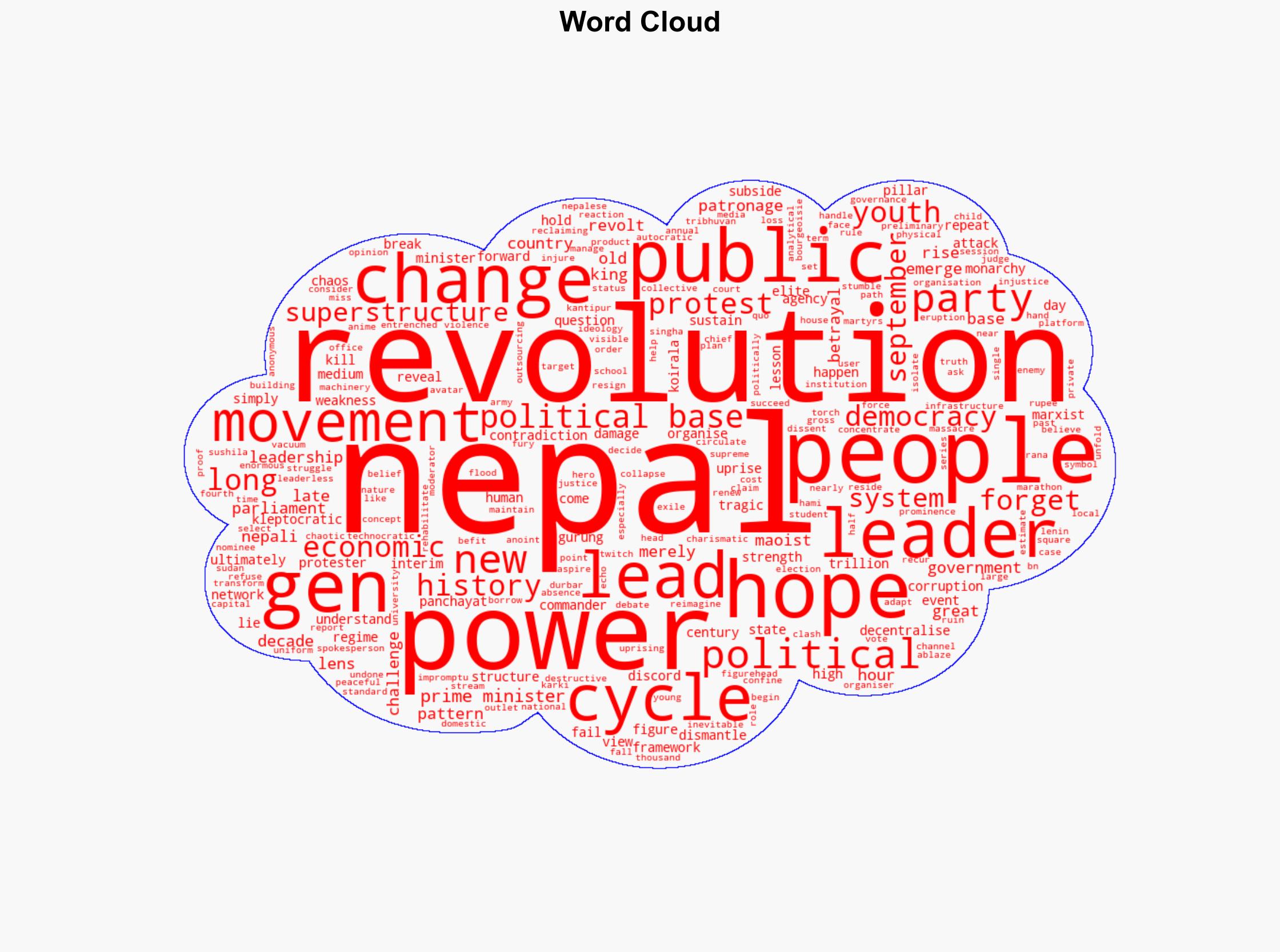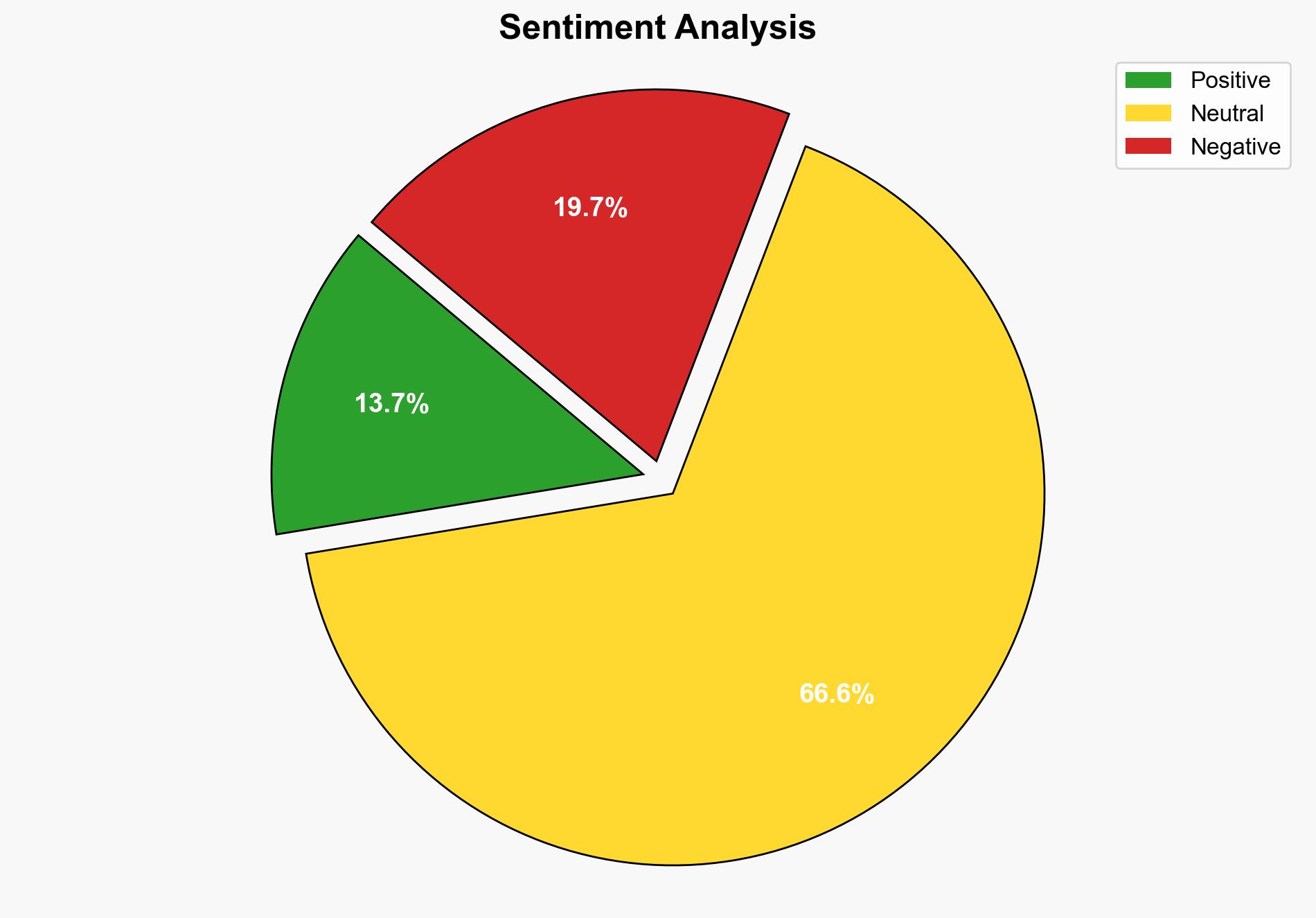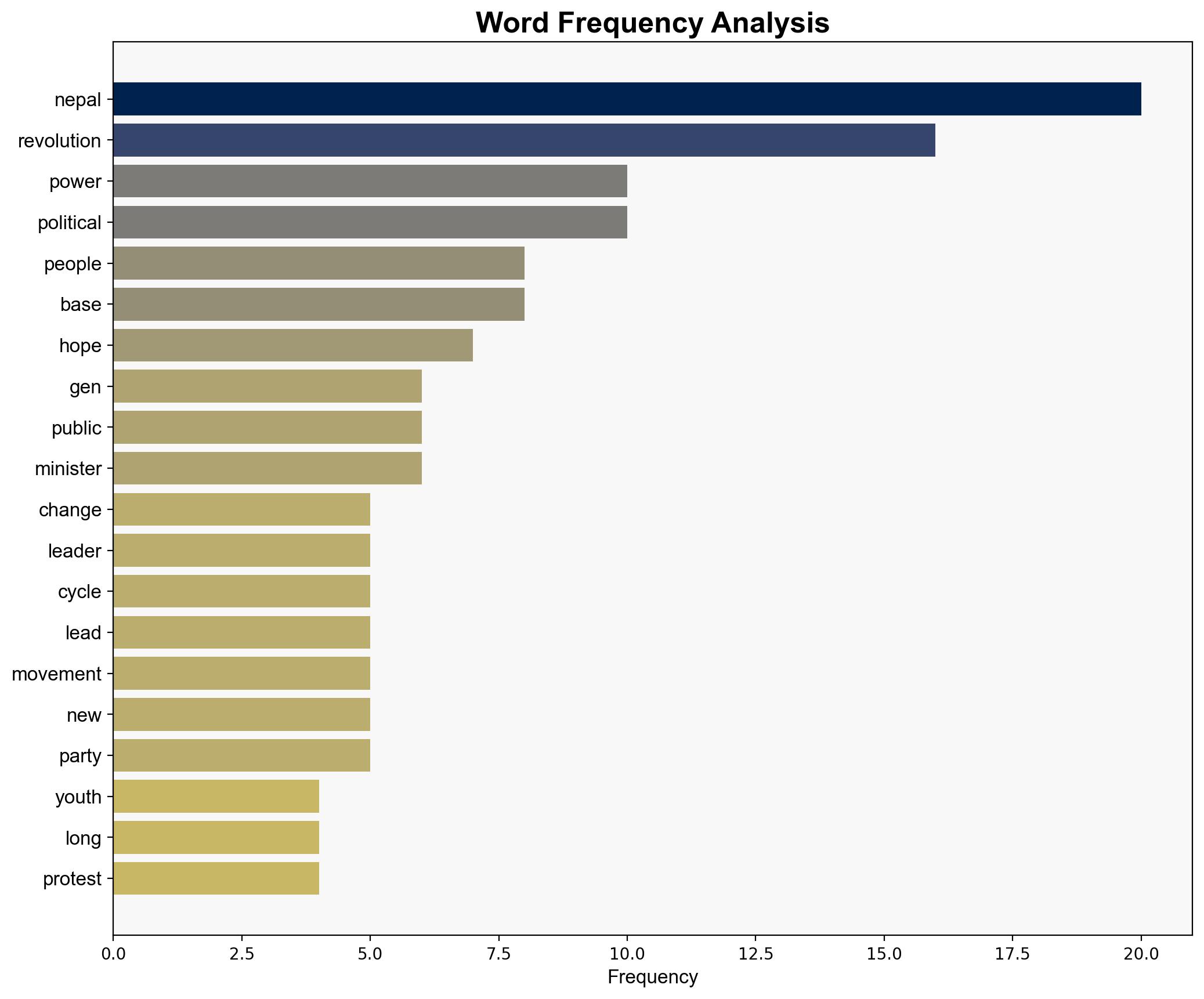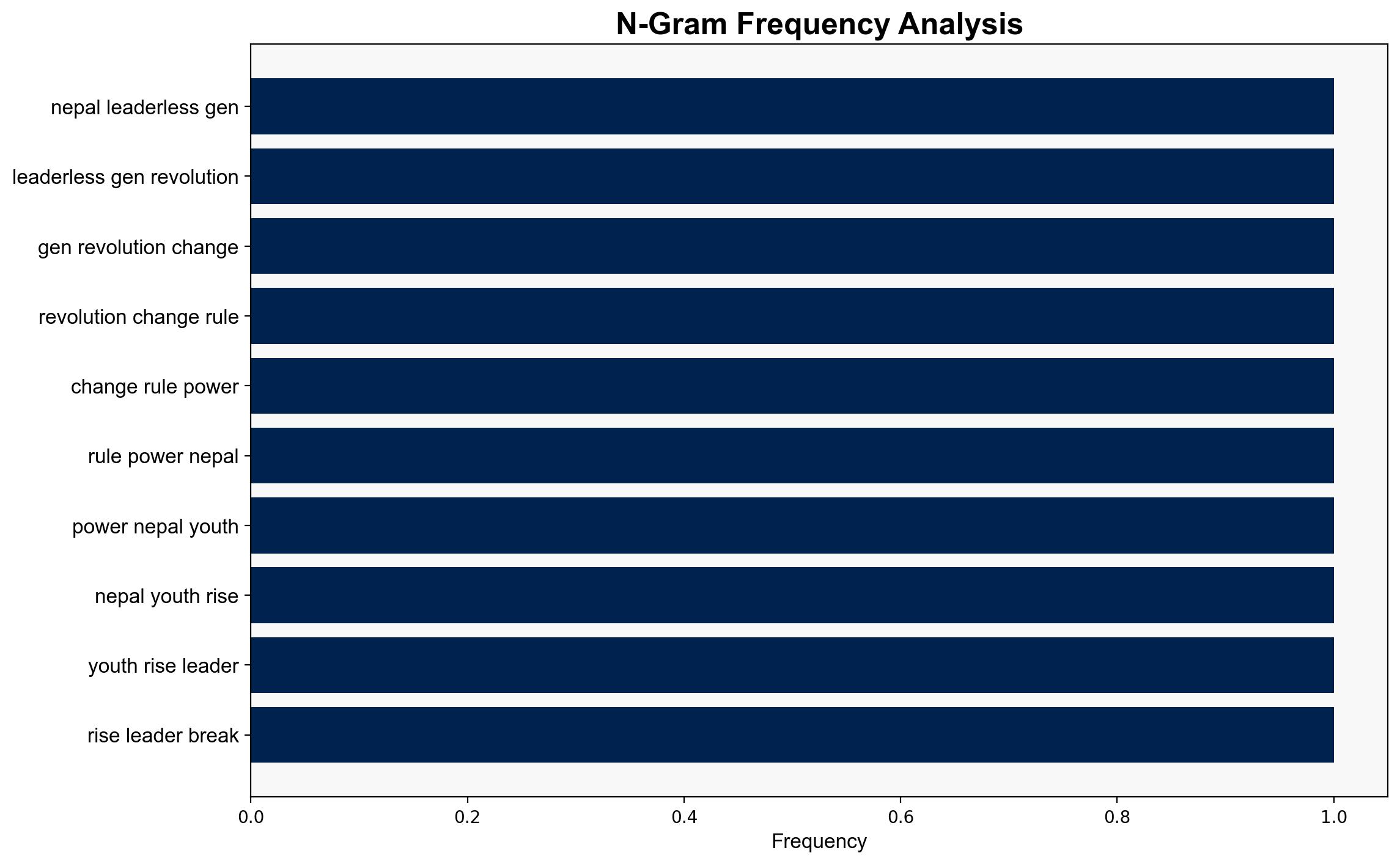Nepals leaderless Gen-Z revolution has changed the rules of power – Al Jazeera English
Published on: 2025-10-03
Intelligence Report: Nepal’s Leaderless Gen-Z Revolution Has Changed the Rules of Power – Al Jazeera English
1. BLUF (Bottom Line Up Front)
The leaderless Gen-Z revolution in Nepal represents a significant shift in political dynamics, challenging traditional power structures. The most supported hypothesis suggests that this movement’s decentralized nature could lead to sustainable political reform, though the risk of reverting to old patterns remains. Confidence Level: Moderate. Recommended action includes monitoring the evolution of this movement and supporting initiatives that promote democratic engagement and stability.
2. Competing Hypotheses
1. **Hypothesis A**: The leaderless Gen-Z revolution will lead to a sustainable transformation of Nepal’s political landscape, reducing corruption and decentralizing power.
– **Support**: The movement’s decentralized nature and rejection of traditional leadership models suggest a shift towards more inclusive governance.
– **SAT Applied**: Cross-Impact Simulation indicates that the absence of a central figurehead reduces the risk of power concentration and potential corruption.
2. **Hypothesis B**: The revolution will ultimately fail to achieve lasting change, as the lack of centralized leadership may lead to fragmentation and a return to previous power structures.
– **Support**: Historical patterns in Nepal show a tendency for revolutions to be co-opted by existing power networks, as seen in past uprisings.
– **SAT Applied**: ACH 2.0 highlights the risk of fragmentation due to the absence of cohesive leadership, which could undermine the movement’s goals.
3. Key Assumptions and Red Flags
– **Assumptions**: Both hypotheses assume that the decentralized nature of the movement is a critical factor in its potential success or failure.
– **Red Flags**: The potential for external manipulation by entrenched political entities seeking to maintain the status quo.
– **Blind Spots**: Limited information on the movement’s internal dynamics and potential external influences.
4. Implications and Strategic Risks
– **Economic Risks**: Continued instability could deter foreign investment and exacerbate economic challenges.
– **Geopolitical Risks**: Regional actors may exploit the political vacuum to influence Nepal’s internal affairs.
– **Psychological Risks**: Prolonged unrest may lead to public disillusionment with democratic processes.
5. Recommendations and Outlook
- Monitor the movement’s development and engage with grassroots organizations to support democratic initiatives.
- Encourage dialogue between the interim government and protest leaders to foster stability.
- Scenario Projections:
– **Best Case**: The movement leads to a more transparent and accountable government.
– **Worst Case**: Fragmentation results in increased violence and regression to autocratic governance.
– **Most Likely**: A mixed outcome where some reforms are achieved, but challenges persist.
6. Key Individuals and Entities
– Sudan Gurung: Emerging as a spokesperson for the youth-led organization Hami Nepal.
– Sushila Karki: Nominated as interim Prime Minister, symbolizing a potential shift towards technocratic governance.
7. Thematic Tags
national security threats, political reform, regional focus, democratic movements





